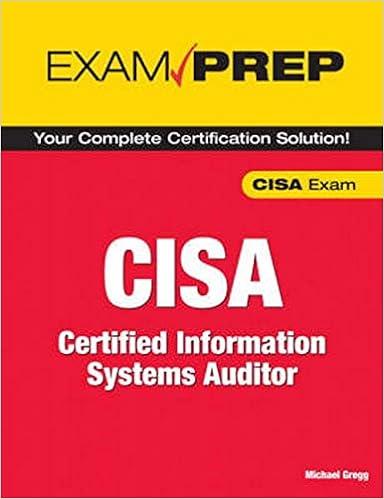#1


#2

 #3
#3

Hrubec Products, Inc., operates a Pulp Division that manufactures wood pulp for use in the production of various paper goods. Revenue and costs associated with a ton of pulp follow: $21 $11 Selling price Expenses: Variable Fixed (based on a capacity of 104,000 tons per year) Net operating income 6 17 $4 Hrubec Products has just acquired a small company that manufactures paper cartons. Hrubec plans to treat its newly acquired Carton Division as a profit center. The manager of the Carton Division is currently purchasing 29,000 tons of pulp per year from a supplier at a cost of $18.90 per ton. Hrubec's president is anxious for the Carton Division to begin purchasing its pulp from the Pulp Division if the managers of the two divisions can negotiate an acceptable transfer price. Required: For (1) and (2) below, assume the Pulp Division can sell all of its pulp to outside customers for $21 per ton. 1. What is the Pulp Division's lowest acceptable transfer price? What is the Carton Division's highest acceptable transfer price? What is the range of acceptable transfer prices (if any) between the two divisions? Are the managers of the Carton and Pulp Divisions likely to voluntarily agree to a transfer price for 29,000 tons of pulp next year? What is the Pulp Division's lowest acceptable transfer price? What is the Carton Division's highest acceptable transfer price? What is the range of acceptable transfer prices (if any) between the two divisions? Are the managers of the Carton and Pulp Divisions likely to voluntarily agree to a transfer price for 29,000 tons of pulp next year? (Round "Maximum transfer price" answer to 1 decimal place.) Show less Identify the range of acceptable transfer prices (if any): There is not a range of acceptable transfer prices. There is a range of acceptable transfer prices as shown below: Transfer $ 21 x 2 price 2 $ 19 x Are the managers likely to voluntarily agree to a transfer price for 29,000 tons of pulp next year? OYes No Case 11-26 (Algo) Transfer Pricing; Divisional Performance [LO11-3] Weller Industries is a decentralized organization with six divisions. The company's Electrical Division produces a variety of electrical items, including an X52 electrical fitting. The Electrical Division (which is operating at capacity) sells this fitting to its regular customers for $9.30 each; the fitting has a variable manufacturing cost of $5.00. The company's Brake Division has asked the Electrical Division to supply it with a large quantity of X52 fittings for only $7.30 each. The Brake Division, which is operating at 50% of capacity, will put the fitting into a brake unit that it will produce and sell to a large commercial airline manufacturer. The cost of the brake unit being built by the Brake Division follows: Purchased parts (from outside vendors) Electrical fitting X52 Other variable costs Fixed overhead and administration Total cost per brake unit $ 24.30 7.30 14.75 8.80 $ 55.15 Although the $7.30 price for the X52 fitting represents a substantial discount from the regular $9.30 price, the manager of the Brake Division believes the price concession is necessary if his division is to get the contract for the airplane brake units. He has heard through the grapevine that the airplane manufacturer plans to reject his bid if it is more than $56 per brake unit. Thus, if the Brake Division is forced to pay the regular $9.30 price for the X52 fitting, it will either not get the contract or it will suffer a substantial loss at a time when it is already operating at only 50% of capacity. The manager of the Brake Division argues that the price concession is imperative to the well-being of both his division and the company as a whole. Weller Industries uses return on investment (ROI) to measure divisional performance. Required: 1. Assume that you are the manager of the Electrical Division. a. What is the lowest acceptable transfer price for the Electrical Division? b. Would you supply the X52 fitting to the Brake Division for $7.30 each as requested? 2. Assuming the airplane brakes can be sold for $56, what is the financial advantage (disadvantage) for the company as a whole (on a per unit basis) if the Electrical Division supplies fittings to the Brake Division? 3. In principle, within what range would the transfer price lie? (For all requirements, enter your "Financial Disadvantage" amounts as a negative value and round your final answers to 2 decimal places.) Answer is not complete. 1a. $ 9.30 1b. Lowest acceptable transfer price Would you supply the X52 fitting to the Brake Division for $7.30 each as requested? Financial advantage (disadvantage) on a per unit basis Range of transfer price $ 7.65 2. 3. $ 7.30 X to $ 14.95 X The Foundational 15 (Algo) [LO13-2, LO13-3, LO13-4, LO13-5, LO13-6) [The following information applies to the questions displayed below.] Cane Company manufactures two products called Alpha and Beta that sell for $150 and $110, respectively. Each product uses only one type of raw material that costs $5 per pound. The company has the capacity to annually produce 108,000 units of each product. Its average cost per unit for each product at this level of activity are given below: Direct materials Direct labor Variable manufacturing overhead Traceable fixed manufacturing overhead Variable selling expenses Common fixed expenses Total cost per unit Alpha $ 30 26 13 22 18 21 Beta $ 15 22 11 24 14 16 $130 $102 The company considers its traceable fixed manufacturing overhead to be avoidable, whereas its common fixed expenses are unavoidable and have been allocated to products based on sales dollars. Foundational 13-8 (Algo) 8. Assume that Cane normally produces and sells 66,000 Betas and 86,000 Alphas per year. If Cane discontinues the Beta product line, its sales representatives could increase sales of Alpha by 12,000 units. What is the financial advantage (disadvantage) of discontinuing the Beta product line



 #3
#3






